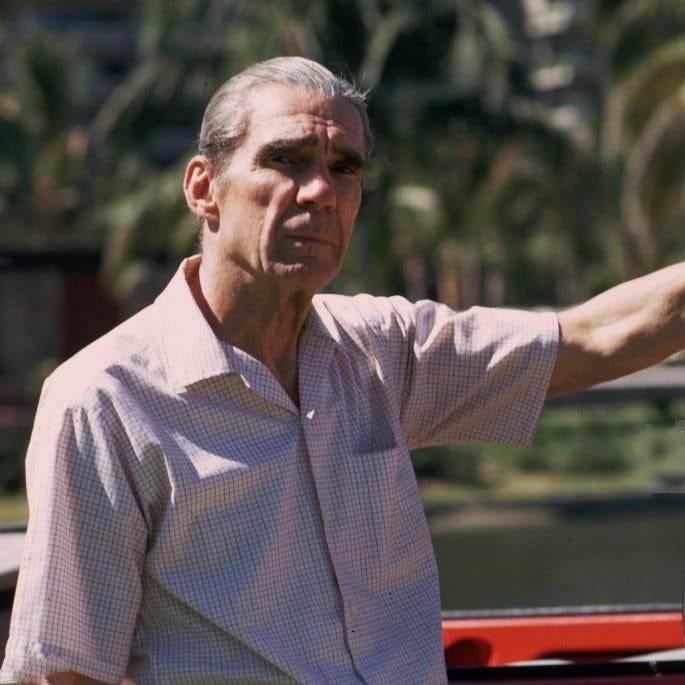“Mr. Ludwig wants to know what the hell is holding you up.”

Daniel Keith Ludwig (pronounced LUDD-wig) was an extremely secretive American shipping magnate and philanthropist who built one of the largest shipping empires in the 20th century.
If you aren’t subscribed yet, hit the subscribe button below to receive this email every weekend, directly in your inbox:
Daniel was born on June 24, 1897 in South Haven, Michigan to German immigrants. His father was a captain of a lake steamboat and later became a small real estate developer.
His early exposure to the shipping industry through his father’s work likely influenced Ludwig’s own career trajectory: four uncles were also captains of vessels traveling across the Great Lakes, and he was born on the shore of Lake Michigan near the site of a local landmark, Ludwig’s Pier, which had been built by his grandfather.
A Sunken Boat
As a 9-year-old boy, Daniel started earning money by selling popcorn and shining shoes: he then decided to invest USD 75 that he had saved to buy a sunken small boat, which he repaired and rented out for profit.
He left school after the eighth grade and became a salesman for a ship supplies firm: Daniel went to night school and worked for a time at a marine engine manufacturing company.
At the age of 19, Daniel went into business on his own, using USD 5,000 which he borrowed using his father’s life insurance policy as collateral. With this money, he purchased a steamboat to transport molasses and wood along the river systems that connected the Great Lakes.
But business was slow and Daniel was looking for ways to improve it.
“I had to hit on something or I was busted,” he would later recall.
He got a loan from a Bank and started chartering a single tanker boat.
From this modest beginning, and thanks to a series of further loans provided by various banks, Daniel expanded his operations, eventually becoming a major player in the global shipping industry.
In the 1930s, notwithstanding the Great Depression, he recognized the potential of large oil tankers and invested heavily in this new technology by developing the concept of the “supertanker” for transporting large volumes of oil (which we briefly explored in the previous Adorable Story #13: George Livanos), which further boosted his business.
He then shifted to ship management and launched the National Bulk Carriers shipping company in New York City in 1935. Through strategic mergers and acquisitions over the next few decades, Daniel grew National Bulk Carriers into an international shipping empire with over 200 cargo ships.
Scaling up
His turning point came in 1936, when he began to evolve an entirely new method of ship finance:
“He came to this bank,” said a Chase Manhattan executive, “and told us he had his tanker chartered out to some oil company. The monthly charter fees he received were just about equal to the monthly payments he’d have to make on the loan he wanted. So, he proposed to assign the charter to the bank. The bank would then collect the charter fees directly from the oil company, and that money would go toward paying off Ludwig’s loan.”
To many bankers it seemed like a crazy setup. Yet, it was in reality as safe for the bank as almost any small-business loan.
Daniel bought an old general-cargo ship he wanted, converted her to an oil tanker, chartered her out, used the charted contract to get another loan on the same basis, and converted still another dry-cargo ship to oil: in short, as long as his boats remained afloat, he invented a way to use the oil companies supply (and their excellent credit rating) to fund his businesses.
This, quite literally, revolutionized the tanker industry and gave independent owners a way to amass huge personal fortunes.
Among other things, the new financing method was responsible for the success of the “golden Greeks,” Onassis and Niarchos.
Keep reading with a 7-day free trial
Subscribe to Adorable Times’ Newsletter to keep reading this post and get 7 days of free access to the full post archives.




